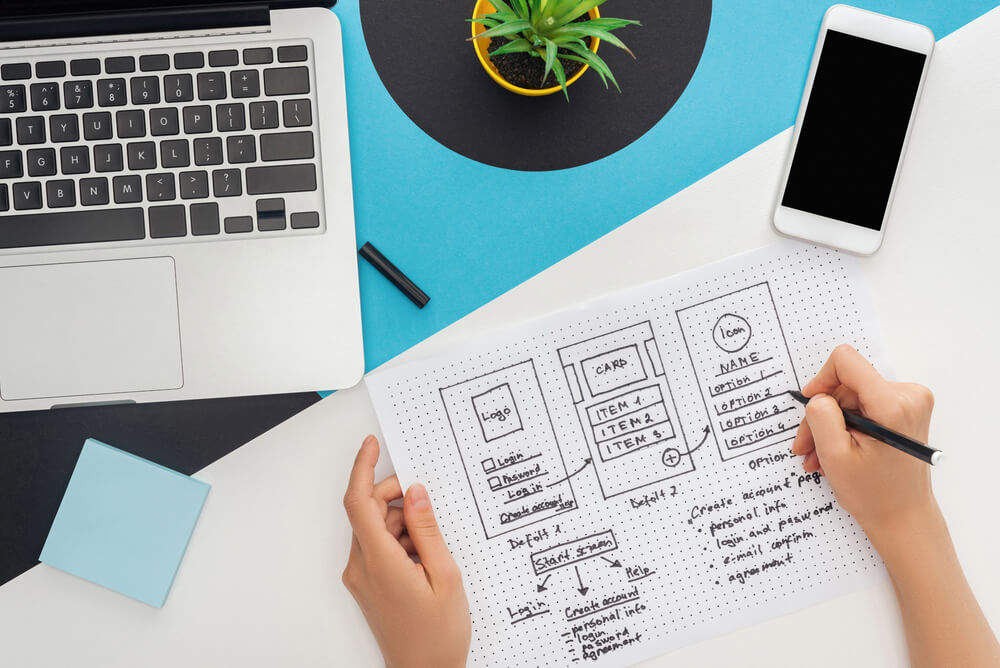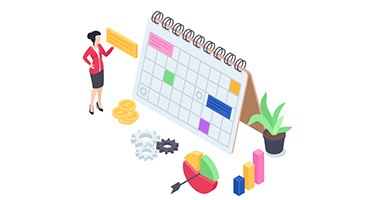The fusionSpan Blog
5 Tips to Merge the Functional and Aesthetic in Your Web UX

Every web-based designer knows the key to an effective user interface is striking the right balance between functionality and aesthetics. The data speaks for itself—on the functional side, 88% of website visitors are less likely to return to a site after having a poor user experience. As for aesthetics, 94% of first impressions are driven by a website’s design.
If you’re looking to transform your organization’s digital presence, merging the functional and aesthetic aspects of your website’s user experience (UX) is crucial to enhancing online audience engagement. The five tips below will help you develop a UX strategy that doesn’t sacrifice performance or visual appeal.

1. Aim for a timeless and simple web design and UX.
84.6% of web designers believe that crowded web design is the most common mistake made by small businesses. Whether your organization is a small business, nonprofit, or association, the negative UX implications of cluttered page design can be serious.
That’s why your organization should take an uncluttered, evergreen web design and UX approach. Prioritize the following elements to build a timeless design and user experience:
- Streamlined, clear navigation. Use a simple main menu with just a few items. Keep drop-downs to a minimum so your menu remains uncluttered and easy to navigate.
- Uncluttered layout. Make the most of white or blank space to give your design elements breathing room on the page. Choose additional elements, like photos, videos, or graphics, intentionally. Every page element should play a unique, vital role in the design.
- Consistent UX across pages. Incorporate the same brand elements, such as fonts, colors, and button styles, across all website pages. Also, ensure your navigation elements and menu remain consistent. This will give visitors a stress-free browsing experience while enhancing your brand recognition.
Using a timeless, uncomplicated design allows your organization to avoid costly, time-intensive redesign processes. By avoiding trend-chasing, you can create a perennially stylish website that maintains its visual appeal over the years. Plus, a simple navigation process reduces your website’s complexity, making it a more performant resource that loads quickly on all devices.
2. Incorporate interactive elements.
Interactive content lies at the intersection of visual intrigue and usability. It helps drive online engagement by empowering users to interface with your website’s content in a more hands-on way. Statistics show that interactive content drives online conversions and leads to 52.6% higher engagement than static content.
Here are a few ideas for engaging interactive content you can incorporate into your site:
- Microinteractions. Kanopi’s higher ed web design guide defines microinteractions as “the small moments and design elements that users experience on your website that engage them more deeply.” Examples include buttons that animate when users hover over them or more complex interactive graphics that allow users to engage with different data points. These small website elements combine aesthetically engaging design with functional aspects such as buttons or links.
- Scrolling animations. These include techniques such as parallax scrolling, fade-in and fade-out elements, sticky menus, and reveal animations. When used sparingly, these elements can provide greater visual intrigue when scrolling through a website without sacrificing usability.
- Interactive timelines or maps. Timelines and maps provide engaging mechanisms for depicting your organization’s history or reach. With the help of a professional design firm or online design tools, these infographics are relatively easy to create. All you need to do is provide data and branding guidelines to build the element.
Enhance your website’s cohesiveness by ensuring all interactive elements incorporate your unique branding, including your color palette, typography, and image style. Carry the digital brand elements that are on your website over across your entire digital footprint – including social media and any digital signage or donor walls at your facility.
3. Prioritize mobile responsiveness.
Mobile responsiveness is a website must-have—it’s not only a crucial search engine ranking factor, but it can also make or break your website users’ opinions of your site. Plus, these days, most people will look at your website on their mobile devices—statistics show that over 90% of internet users access the web on their phones.
Align mobile usability with the visual look of your website by optimizing the following elements:
- Design elements like your layout, colors, and fonts should automatically adapt to different screen sizes.
- Functional elements like buttons, menus, and links should be easy to view and touch on a phone screen.
Test your website by viewing the layout in the mobile format when editing the site. You can also recruit real users to test your mobile website and provide recommendations (more on user testing a little later!).
4. Enhance accessibility.
Web accessibility is inherent to a positive user experience. Here’s how the Web Accessibility Initiative defines this term:
“Web accessibility means that websites, tools, and technologies are designed and developed so that people with disabilities can use them. More specifically, people can perceive, understand, navigate, interact with, and contribute to the Web.”
You shouldn’t sacrifice accessibility for the sake of aesthetics. Accessibility is a legal mandate for most types of websites. Plus, prioritizing accessibility helps create a user-friendly experience for all users.
Ensure your UX and brand elements, such as your logo, colors, and typography, adhere to the Web Content Accessibility Guidelines (WCAG). These guidelines act as a comprehensive blueprint to create a website that is perceivable, operable, understandable, and robust.
Also, continually test your website to identify accessibility concerns. Top content management systems like WordPress and Drupal offer automated accessibility plugins and tests, but they may not tell the full story. We recommend also conducting manual testing on your website to assess its accessibility and catch any issues that could have fallen through the cracks.
Manual testing involves testing keyboard navigation and working with real users with a variety of disabilities. You can also work with a professional web design firm with experience in accessible design to audit and update your website for better usability.
5. Gather ongoing user feedback.
While integrating your website’s functionality and visual look, gathering data will help determine the effectiveness of your efforts. Evaluating user feedback will help you not only make changes to improve your website but also enable you to predict the impact of future changes to determine the best course of action.
Use the following strategies and tools to collect and implement user feedback:
- A/B testing. This involves creating two different versions of a web page or design element and assessing which version performs best for your audience. For example, you could create two different versions of your nonprofit’s online donation page—one with a call to action (CTA) that says “Give Now” and the other with a CTA that says “Donate Today”—and assess which version is more effective for driving conversions.
- User surveys and polls. Create a survey or poll embedded into your website to ask simple questions about the user experience. You could also gather a focus group made of stakeholders, such as members, volunteers, donors, or customers, and ask targeted questions to understand their thoughts and feelings about your website. Be sure to inquire about your site’s accessibility to understand how effectively you’re meeting users’ unique needs.
- Website analytics. Use tools like Google Analytics to track website metrics, such as bounce rate, time spent on each page, and conversion rate. Identify high and low-performing pages to determine which page elements could be improved to drive better engagement.
Merge user feedback incorporation with your regular website maintenance processes. Refresh your site’s technical elements, update your content, and perform other maintenance tasks with user feedback and analytics in mind. That way, you can show audience members that you’re dedicated to continually improving your site based on their preferences and needs.
Functionality and aesthetics are two sides of the same coin when it comes to building a high-value website. Prioritizing both elements equally will help you create the user-friendly, visually stunning website you need to stand out in today’s crowded digital world.








